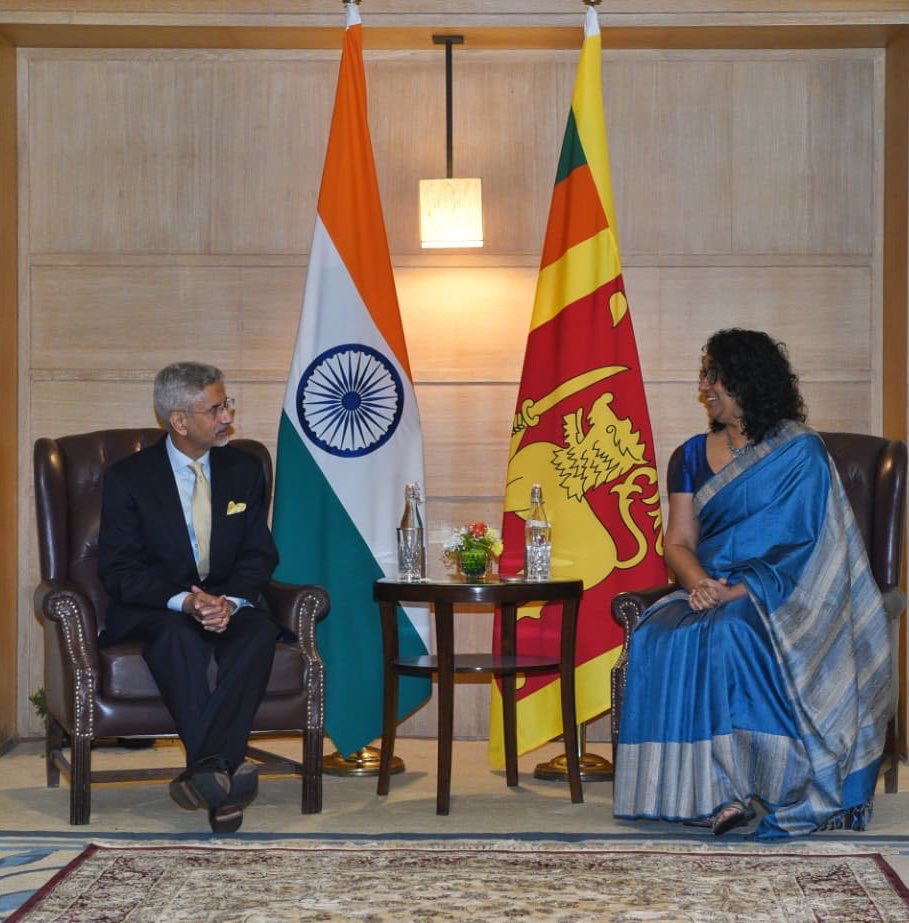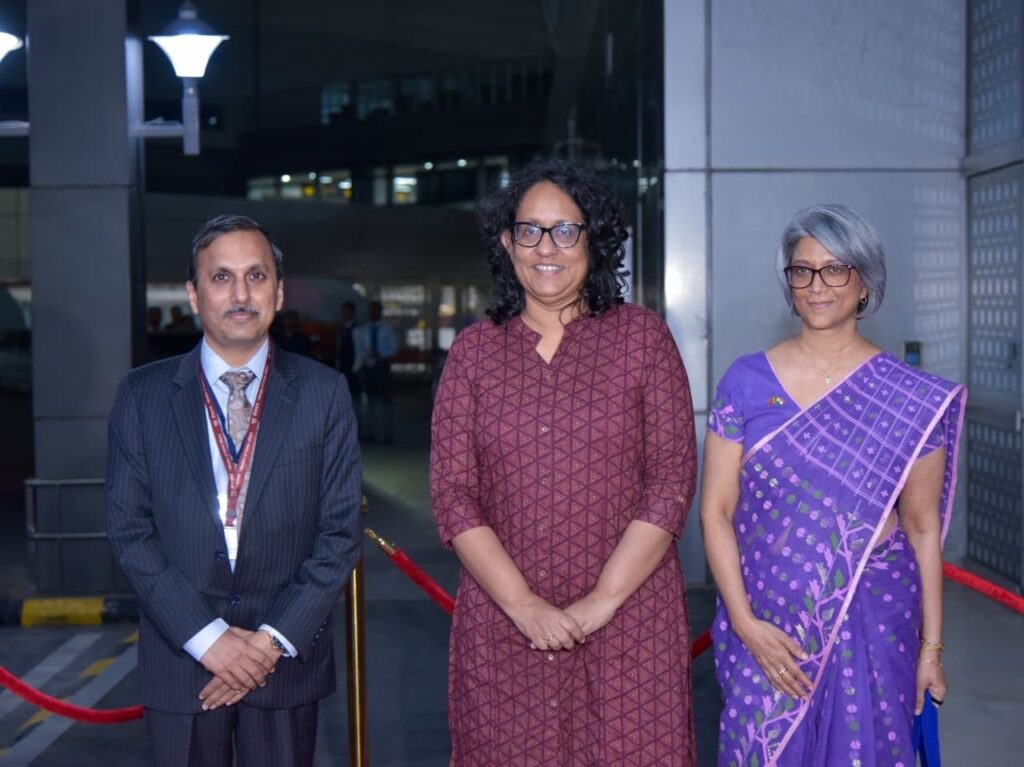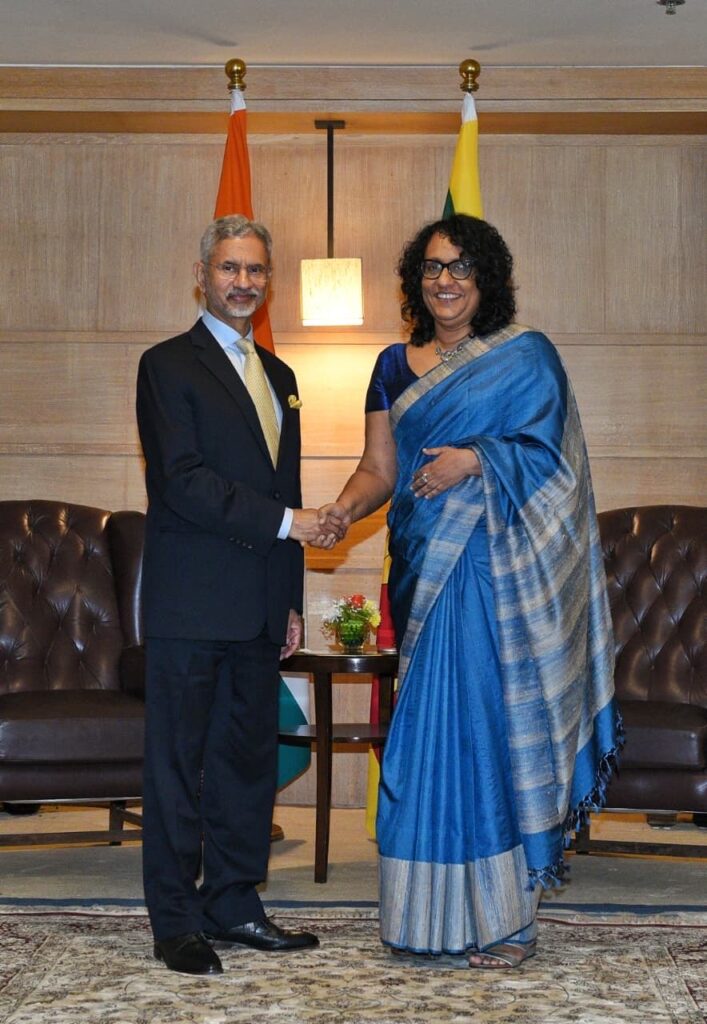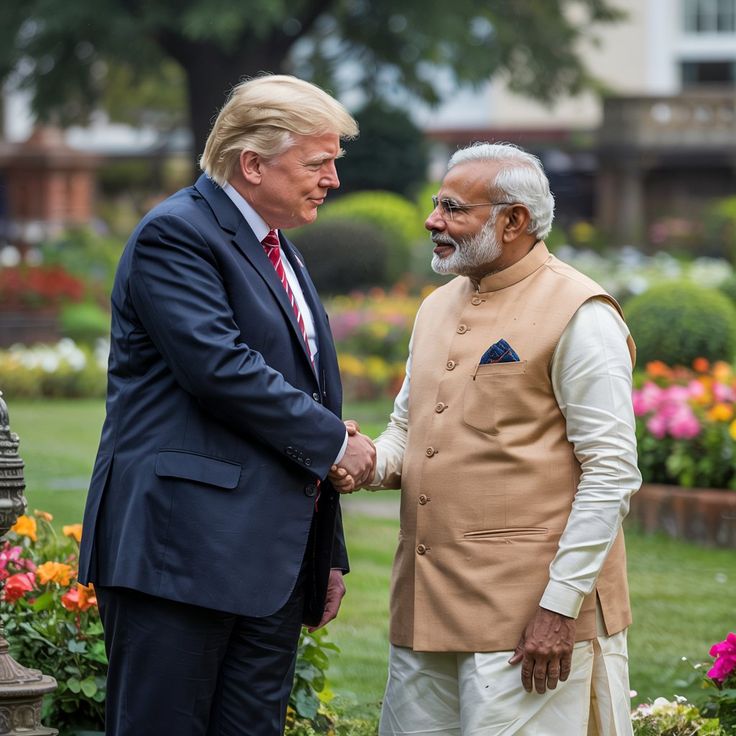Three-Day Visit Aims to Strengthen Economic, Educational, and Strategic Partnerships Between India and Sri Lanka
In a historic diplomatic move, Sri Lanka’s Prime Minister Dr. Harini Amarasuriya arrived in New Delhi on Wednesday, October 16, 2024, marking her first official visit to India since assuming office. The three-day visit symbolizes a renewed commitment to deepening Indo-Sri Lankan relations at a time when the island nation continues to rebuild its economy following the 2022 financial crisis.
Dr. Amarasuriya’s visit, characterized by a blend of economic diplomacy, strategic engagement, and people-to-people connect, is being seen as a cornerstone moment for the two South Asian neighbors who share historical, cultural, and geographical bonds that date back centuries.
A Visit Rooted in Shared History and Forward-Looking Goals
The arrival of Dr. Amarasuriya in India is being interpreted by political observers as a significant gesture towards reinvigorating bilateral trust and expanding cooperation beyond traditional areas like trade and tourism. India was Sri Lanka’s first responder during the 2022 economic crisis, extending nearly $4 billion in financial assistance, including credit lines for fuel, food, and essential goods.
Now, as Sri Lanka stabilizes and begins its economic recovery, the visit aims to transform that crisis-driven partnership into a sustainable developmental collaboration.
In her opening remarks after landing in New Delhi, Dr. Amarasuriya expressed gratitude towards India’s continued support:
“India stood with Sri Lanka during our most challenging times. Today, we come with a vision to build stronger, future-oriented partnerships that empower our people, especially in education, innovation, and sustainable development,” she said.
Meeting with External Affairs Minister S. Jaishankar: Deepening Economic and Educational Links
Shortly after her arrival, Dr. Harini Amarasuriya met External Affairs Minister S. Jaishankar at Hyderabad House. The two leaders held extensive discussions on India’s continued economic partnership, particularly the effective utilization of the $4 billion aid package extended during Sri Lanka’s crisis period.
The conversation focused on enhancing cooperation in education, skill development, and capacity building, areas where India has played a vital mentoring role for Sri Lankan institutions.
According to official sources, the two sides discussed the possibility of:
- Establishing joint research programs between universities in India and Sri Lanka.
- Enhancing student exchange programs and academic scholarships.
- Setting up a Sri Lanka–India Education and Innovation Council to encourage cross-border collaboration in higher education and technology.
Dr. Jaishankar reaffirmed India’s continued commitment to supporting Sri Lanka’s developmental journey, stating,
“Sri Lanka is not just a neighbor but a close partner in our region’s shared growth story. Under our Neighbourhood First and SAGAR (Security and Growth for All in the Region) policies, India remains dedicated to strengthening our economic and educational ties.”
Key Meeting with Prime Minister Narendra Modi on October 17
The highlight of Dr. Amarasuriya’s visit is scheduled for October 17, when she meets Prime Minister Narendra Modi at Hyderabad House. The two leaders are expected to hold comprehensive talks covering maritime security, trade expansion, and climate resilience—all crucial areas for both nations.
1. Maritime Security and Regional Stability
Given the strategic location of Sri Lanka in the Indian Ocean, discussions on maritime cooperation are expected to feature prominently. India and Sri Lanka have shared concerns about the growing presence of extra-regional powers in the region, and both nations are likely to explore mechanisms for enhanced coastal surveillance, joint naval exercises, and maritime data sharing.
India’s SAGAR policy, which emphasizes cooperative security and sustainable use of ocean resources, aligns closely with Sri Lanka’s own interests in protecting its maritime boundaries and fisheries.
2. Trade and Economic Connectivity
On trade, the two sides are expected to explore upgrading the India-Sri Lanka Free Trade Agreement (ISFTA) into a more comprehensive economic partnership, potentially covering services, investment, and digital trade.
With Sri Lanka’s economy on the path of stabilization, Indian investment in infrastructure, renewable energy, and tourism sectors could see a significant boost.
Sources close to the meeting preparation suggest that the two leaders may announce:
- A bilateral economic task force to monitor and enhance trade flows.
- A Green Energy Corridor connecting Indian renewable firms with Sri Lankan clean energy projects.
- Collaborative initiatives in port development and shipping logistics.
3. Climate Change and Sustainable Development
Climate resilience will also form an important pillar of dialogue, as both countries face increasing environmental challenges such as rising sea levels, erratic rainfall, and coastal erosion. India is likely to propose joint research on climate adaptation technologies, while Sri Lanka is expected to seek technical support in renewable energy implementation and sustainable agriculture.
Focus on Education and Innovation: Visits to IIT Delhi, Hindu College, and NITI Aayog
Dr. Amarasuriya’s itinerary is rich with academic and developmental engagements. On October 18, she will visit Hindu College and IIT Delhi, two premier Indian institutions, to explore opportunities for academic collaboration and research exchange.
At Hindu College, she is expected to interact with faculty and students, sharing insights on post-crisis education reforms in Sri Lanka and emphasizing the role of youth in shaping resilient democracies. The visit to IIT Delhi will center around discussions on STEM education, innovation ecosystems, and technology-driven skill development.
Later that day, Dr. Amarasuriya will meet senior officials at NITI Aayog, India’s premier policy think tank, to understand India’s developmental planning models—particularly in areas such as digital governance, rural entrepreneurship, and women’s empowerment.
Analysts believe these visits highlight Sri Lanka’s intent to learn from India’s institutional expertise and adapt similar frameworks for its domestic reforms.
India’s “Neighbourhood First” Policy in Action
Dr. Amarasuriya’s visit reinforces India’s long-standing Neighbourhood First policy, under which New Delhi prioritizes strong ties with its immediate neighbors through economic aid, trade facilitation, and infrastructure support.
India’s outreach to Sri Lanka, especially during its crisis years, demonstrated the spirit of regional solidarity. Over the past two years, India’s assistance included:
- Fuel and food shipments during shortages.
- Credit lines worth over $3.5 billion.
- Humanitarian aid, including medical supplies and essential goods.
- Support for economic reforms and debt restructuring efforts through multilateral forums.
- With Sri Lanka now transitioning from crisis to recovery, India is keen to elevate its role from a crisis responder to a long-term development partner.
Foreign policy experts note that this evolving partnership could also serve as a model for South-South cooperation, showcasing how neighboring countries can collaboratively navigate global challenges such as debt distress, climate change, and digital inequality.
Cultural and People-to-People Connections
Beyond politics and economics, the India–Sri Lanka relationship is deeply rooted in civilizational and cultural ties. Both nations share centuries of history through Buddhism, art, literature, and language.
During her visit, Dr. Amarasuriya is expected to pay homage at Buddhist sites in Delhi, reflecting Sri Lanka’s spiritual link to India, the land where Buddhism was born.
Cultural diplomacy is expected to feature prominently in the bilateral agenda, with potential announcements about:
- Tourism promotion initiatives, including Buddhist pilgrimage circuits.
- Film and media collaborations to boost creative exchanges.
- Joint cultural festivals celebrating shared heritage.
These soft diplomacy measures aim to foster greater mutual understanding and strengthen people-to-people bonds, which have historically formed the backbone of Indo-Sri Lankan relations.
A Visit Marking Women’s Leadership and Regional Diplomacy
Dr. Harini Amarasuriya’s visit is also historic in another respect—she is Sri Lanka’s first female Prime Minister to undertake a state visit to India. Her leadership symbolizes a new era of inclusive governance and gender representation in South Asian politics.
Observers see her visit as an important step in redefining Sri Lanka’s foreign policy narrative, moving from crisis management to proactive engagement with regional and global partners.
As Dr. Amarasuriya engages with Indian policymakers, entrepreneurs, and academics, her agenda reflects a comprehensive approach to diplomacy—balancing economic recovery, education, gender empowerment, and sustainable growth.
Strengthening Regional Cooperation in the Indian Ocean
Given the strategic significance of the Indian Ocean region, both India and Sri Lanka recognize the need for collective regional security and sustainable development.
The Indian Ocean serves as a crucial maritime trade route, and both nations are increasingly collaborating to ensure freedom of navigation, disaster preparedness, and environmental protection.
India has been extending technical and defense assistance to Sri Lanka through coastal radar networks, joint exercises, and maritime domain awareness programs. During this visit, new frameworks for blue economy partnerships—including fisheries management and ocean conservation—are expected to be announced.
Economic Outlook: Rebuilding Sri Lanka with India as a Strategic Partner
With Sri Lanka now showing early signs of economic recovery, Indian businesses are looking at investment opportunities in multiple sectors:
- Energy: Solar, wind, and hybrid projects to reduce fossil fuel dependence.
- Tourism: Joint promotion of cultural and eco-tourism circuits.
- Digital Transformation: Indian IT companies helping Sri Lanka modernize public services.
- Infrastructure: Development of ports, highways, and logistics corridors.
Indian officials believe that such investments will not only help Sri Lanka’s growth but also create a mutually beneficial economic zone in the Indian Ocean, boosting regional trade and employment.
Looking Ahead: The Promise of a Stronger Indo-Lankan Partnership
As Dr. Harini Amarasuriya continues her engagements in New Delhi, optimism is palpable on both sides. The visit is being viewed as a turning point in bilateral diplomacy, moving from crisis-driven cooperation to a partnership focused on shared prosperity and sustainable development.
In the words of a senior Indian diplomat:
“This visit is not just about aid or agreements. It’s about trust, vision, and the shared belief that India and Sri Lanka can grow together as equal partners in shaping a peaceful and prosperous Indian Ocean region.”
A Symbolic and Strategic Milestone
Dr. Harini Amarasuriya’s first official visit to India underscores the deepening maturity of Indo-Sri Lankan relations. From maritime security to education, from economic revival to climate resilience, the partnership is expanding into new, future-oriented domains.
Her three-day visit is expected to yield several joint statements, MOUs, and policy frameworks that will guide cooperation for years to come. More importantly, it reflects the human and historical connection that continues to define the India–Sri Lanka relationship—a partnership built on empathy, mutual respect, and shared destiny.
Related News: Read More





